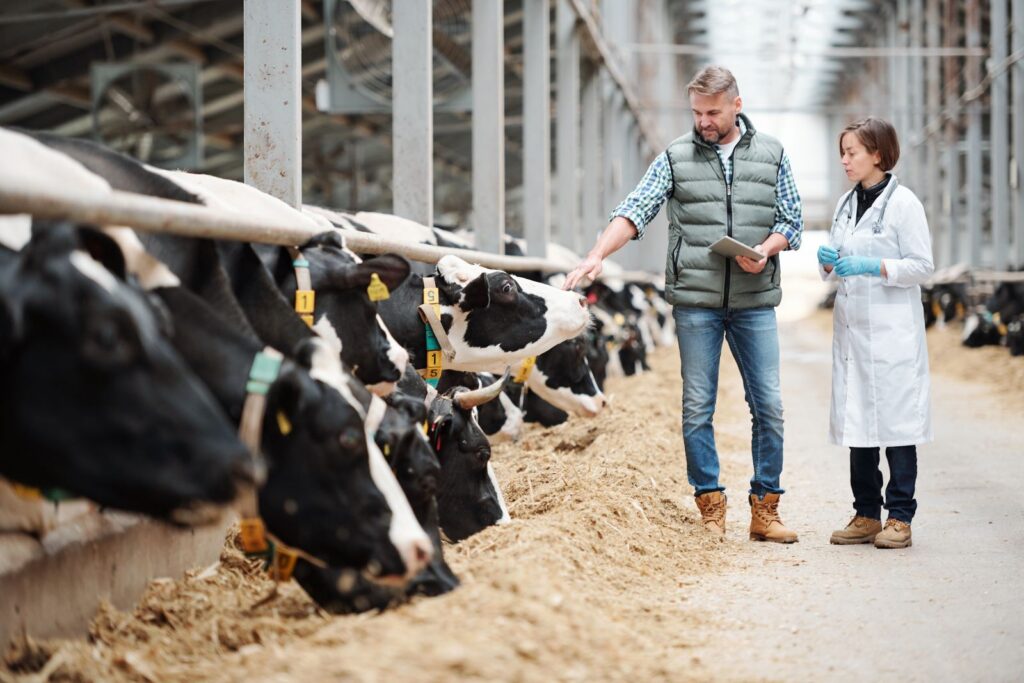The power of AI and machine learning to optimise beef and dairy cattle
9th May 2023
The vast computational power of machine learning has the ability to better alert farmers, resulting in earlier interventions and treatments to benefit animal health and welfare and provide a significant economic boost to the industry. This is according to Chloe Hazell, Agxio’s bioscientist & research lead, who explores the potential of data and AI in the beef and dairy industries.
With global population size increasing and the need for protein on the rise, consumer demand for meat continues to grow across the world. Global beef and dairy industries were valued at £394.21 billion and £388.22 billion in 2020, with the respective markets forecasted to reach £564.80 billion by 2030 and £464.61 billion by 2027.
This rising demand means an increase in pressure on farmers, especially in our challenging economic environment. Therefore, farmers will need to look to innovative techniques to reduce labour needs and costs, while also ensuring animal welfare is not compromised.
Precision technology paving the way
Steps towards automation of simple but laborious tasks in livestock farming are becoming more popular to reduce labour demands. Electronic ear tags are becoming more widespread to allow for automatic reading and weighing of animals and reduce the need for human intervention.
This simple yet effective technology is complimented by on- and off-animal sensors that aid farmers with multiple aspects of livestock management. These sensors collect valuable data which inform the farmer of both the environment and health of the animals, without the need for constant manual checks.
Alongside reducing labour costs, investing in monitoring technology comes with economic benefits for farmers, as well as improved observation of animal health-related behaviours and markers.
What technology already exists?
Recent advances have seen an increase in the use of the following on- and off-animal sensors for economic, welfare and overall farm management enhancement for beef and dairy farmers worldwide.
Activity pattern recognition
The value of artificial intelligence analysing activity patterns within cattle is becoming more recognised by the industry. Data is collected on the animal’s location, behaviour and activity levels, gait quality and feed intake, offering farmers greater insight into the health of their animals.
Through artificial intelligence and modelling, farmers are alerted to behaviours that may be indicative of disease, such as changes in gait which could indicate lameness in cattle. Farmers can then locate the animal and carry out the necessary interventions to rectify the issue, improving its welfare and consequently the yield from that animal.
Temperature recognition
Heat stress is a common issue in cattle during the increasingly warm summer months. When the temperature humidity index (THI) rises above 72, cows can begin to suffer, presenting with increased breathing rates, panting and progressive lethargic behaviour. This hinders the animals’ health and welfare and decreases production efficiency, leading to negative financial impacts.
Work has begun to implement machine learning along with integrated sensors to collect real-time temperature data in livestock. This data can then be utilised to model and predict when heat stress is likely to occur in cattle, and also identify events that may be linked to the issue.
Once temperatures are reached that indicate the onset of heat stress, farmers receive alerts allowing for the necessary interventions to be made to remediate the issue. This can also be taken a step further to enbale farmers to automatically turn on fans or open vents when certain thresholds are met as determined by AI.
Reproduction and calving
The application of machine learning can also model and predict the onset of calving in cattle and help reduce the risk of still births. Mounted towards the base of the tail, a sensor can be used to detect subtle changes in behaviour such as an elevated tail, which presents approximately six hours before calving.
As such, the use of sensor technology with built-in AI can aid early detection of labour and alert farmers so they can be on hand to assist if any issues may occur during birth. This can help decrease the frequency of still births, improving cow welfare and production efficiency.
The future with AI?
By harnessing sensor technology, cameras, and other modes of data collection, the industry is beginning to collect large banks of data. This data is extremely valuable and, if analysed correctly, can provide significant insights to help further improve current livestock systems, including calving.
These insights can then help optimise areas such as disease management, feeding regimes, and environmental conditions. With the correct applications, farmers can support their animals by providing optimal conditions for growth and welfare to benefit overall production efficiencies.
Agxio’s Apollo engine is capable of ingesting multiple forms of data, including string and image, which is then processed and analysed to provide informative data analytics that can help improve on-farm management to reach optimal conditions.
Recent work has proved the scope of Agxio’s machine learning platforms, from image analytics predicting disease to sensor intelligence assisting in environment controls and optimisations. Overall, the data collected on farms makes for an exciting prospect for the beef and dairy industries worldwide from the perspective of both animal health and welfare and farm productivity.

